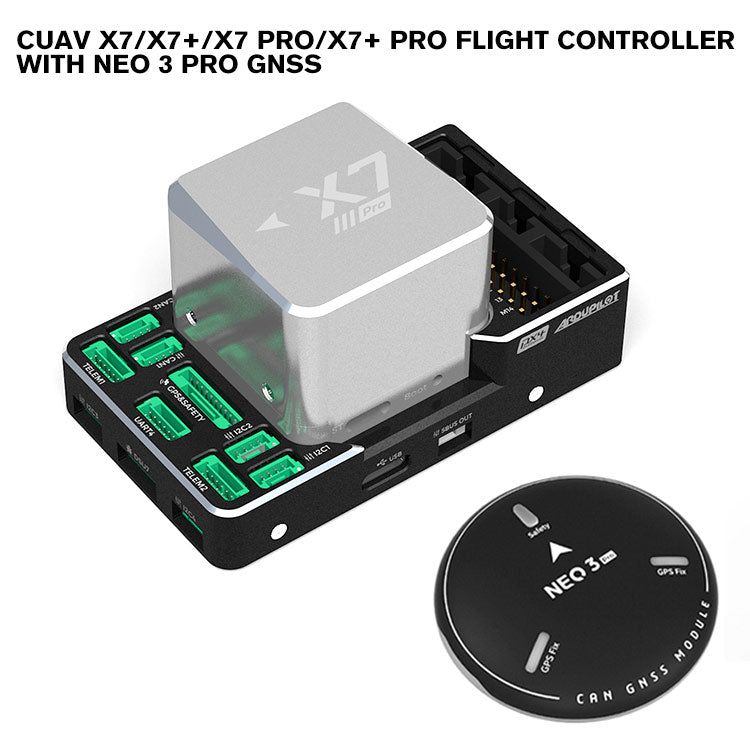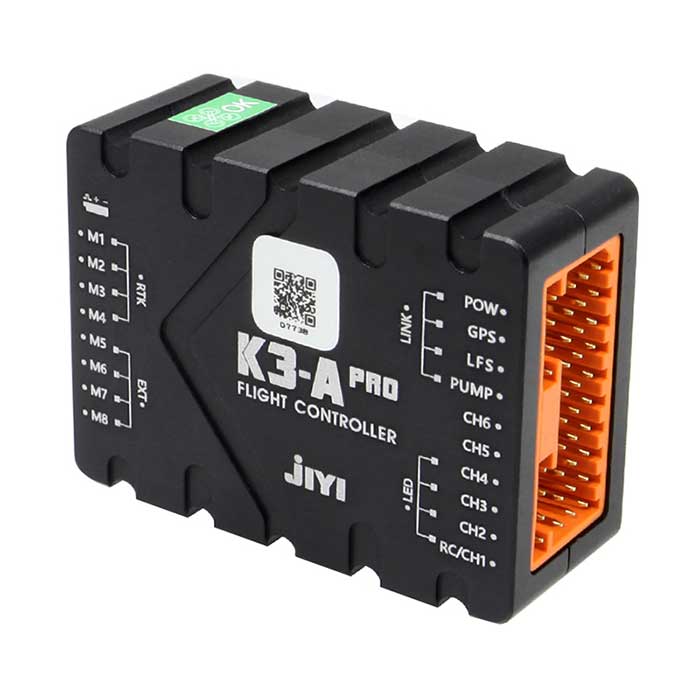Unrivaled Precision: SparkNavi Drone Flight Controller and GNSS/INS Made in Taiwan
Unrivaled Precision: SparkNavi Drone Flight Controller and GNSS/INS Made in Taiwan
Blog Article
Checking Out the Role of Drone Trip Controllers in Enhancing Flight Security and Navigating Effectiveness
The advancement of drone technology has actually significantly enhanced the significance of trip controllers, which offer as the mind of these aerial automobiles. By incorporating real-time information from a selection of sensing units, flight controllers boost flight security and navigating effectiveness, making sure that drones can operate smoothly also in complex settings.

Comprehending Trip Controllers
Trip controllers are important components in the performance of drones, functioning as the minds that stabilize and handle flight operations. These advanced gadgets process data from numerous sensors, including accelerometers, gyroscopes, and GPS, to ensure that the drone maintains its intended trip path. The flight controller interprets this information and carries out commands based on pre-defined algorithms, allowing the drone to reply to ecological modifications, such as wind or obstacles.
The key feature of a flight controller is to keep security throughout trip. It achieves this by making real-time adjustments to the drone's electric motors and control surface areas, guaranteeing balance and control. In addition, modern-day flight controllers include innovative attributes such as waypoint navigating, permitting for automated trip courses and boosted functional performance.
Comprehending the design of trip controllers is critical for both hobbyists and professionals. As innovation developments, flight controllers have actually become extra capable and portable, integrating fabricated intelligence to adjust and improve decision-making procedures to complex flight situations.
Secret Components of Trip Security
Achieving optimal trip stability in drones counts on a number of crucial components that work in performance to guarantee smooth and controlled operations. Central to this stability is the trip controller itself, which refines data from different sensing units to keep the preferred trip attitude. This includes accelerometers and gyroscopes that measure motion and alignment, permitting real-time adjustments to the drone's position.
Another critical element is the electronic speed controllers (ESCs), which control the power delivered to the motors. By finely adjusting electric motor rates in reaction to trip controller commands, ESCs assist maintain balance and counteract disruptions brought on by wind or sudden motions.
In addition, the layout of the drone's structure plays a pivotal role in flight stability. A well-structured framework lessens resonances and improves the general aerodynamic account, adding to smoother flight qualities. The assimilation of advanced formulas within the trip controller aids in predictive changes, guaranteeing a receptive and versatile flight experience.
Together, these parts create a cohesive system that improves a drone's stability, permitting for accurate maneuvering and boosted performance in different flight conditions.
Navigating Effectiveness Techniques
Effectiveness in navigating is important for enhancing drone operations, specifically in complex settings. Reliable navigating methods enhance the ability of drones to go across challenging terrains and stay clear of challenges, consequently enhancing operational efficiency and safety and security.
One prominent strategy is the execution of advanced GPS and inertial dimension devices (IMUs) that supply precise location monitoring and alignment data. These innovations permit drones to determine ideal trip paths in real-time, thinking about various variables such as wind conditions and potential barriers.
An additional strategy includes making use of algorithms for course preparation and optimization. Formulas such as A * and Dijkstra's algorithm can be deployed to identify the most effective course while reducing energy consumption and flight time. Furthermore, integrating artificial intelligence designs can enable drones to go to these guys adaptively learn from their atmospheres, boosting navigating capabilities with experience.

Influence On Autonomous Drones
The combination of innovative navigation strategies has exceptionally transformed the abilities of autonomous drones, enabling them to operate with better autonomy and accuracy. SparkNavi drone flight controller and GNSS/INS made in taiwan. These improvements are mostly attributed to innovative trip controllers that utilize real-time data processing and sensing unit combination, allowing drones to browse intricate environments perfectly
The effect on self-governing drones extends beyond simple navigating; it encompasses boosted obstacle evasion, enhanced stability throughout vibrant conditions, and enhanced mission reliability. By leveraging algorithms that include device understanding and synthetic intelligence, drones can adjust to altering situations, making informed decisions that maximize their trip courses while lessening dangers.
Moreover, the implementation of robust trip controllers has promoted the execution of complicated tasks, such as airborne assessments, delivery solutions, and agricultural tracking, with very little human treatment. This ability not only enhances operations yet likewise minimizes human error, thereby enhancing overall safety.
Therefore, the functional scope of independent drones has increased substantially, making them important tools in different industries. Their ability to perform effectively in diverse situations emphasizes the important duty that advanced trip controllers play fit the future of unmanned aerial systems.
Future Trends in Flight Control
Frequently, improvements in flight control technology are positioned to redefine the landscape of drone procedures in the coming years. Emerging patterns suggest a significant change towards improved synthetic knowledge (AI) assimilation, allowing flight controllers to process real-time information a lot more successfully. This evolution will certainly promote better decision-making abilities, allowing drones to adapt to dynamic ecological conditions autonomously.
Additionally, the execution of machine discovering algorithms is anticipated to enhance predictive maintenance, thereby lessening downtime and expanding the lifecycle of drone parts. This positive technique to upkeep will be essential as More hints drone applications broaden across numerous industries, from agriculture to logistics.

.png)
Lastly, innovations in protected communication procedures will certainly resolve safety and security and regulative concerns, ensuring that drones can operate seamlessly in stuffed airspaces (SparkNavi drone flight controller and GNSS/INS made in taiwan). Jointly, these patterns point towards a future where flight control systems are not only smarter and a lot more also capable yet efficient of running safely about his in a progressively incorporated airspace
Final Thought
In conclusion, drone flight controllers are indispensable to enhancing flight stability and navigating effectiveness through the sophisticated handling of sensor information. By maintaining optimum flight mindsets and using sophisticated algorithms for course optimization and challenge avoidance, these controllers dramatically add to the freedom and functional safety and security of drones. As modern technology remains to develop, better improvements in trip control systems are prepared for, assuring improved efficiency and expanded abilities in the realm of unmanned aerial cars.
By incorporating real-time information from a variety of sensors, flight controllers improve trip stability and navigating efficiency, guaranteeing that drones can operate smoothly even in complicated settings.Trip controllers are indispensable parts in the functioning of drones, offering as the minds that take care of and support trip procedures. Furthermore, modern trip controllers integrate sophisticated features such as waypoint navigating, allowing for automated flight paths and boosted functional efficiency.
Central to this security is the flight controller itself, which refines information from various sensors to keep the preferred flight attitude.In verdict, drone flight controllers are integral to enhancing trip stability and navigation effectiveness via the sophisticated processing of sensor information.
Report this page